Come as you are: Celebrating the self and self-expression in stock imagery
The Adobe Stock team explores gender representation in stock imagery and media, and shares updates on what we’re doing to promote positive change.
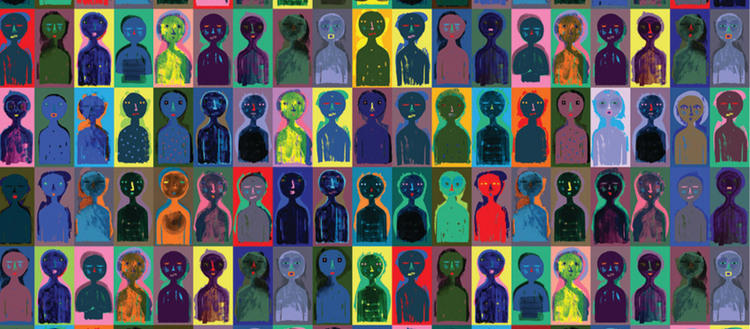
Image source: Adobe Stock / Barry Bödeker/Stocksy.
These days, there are a lot of conversations happening around the importance of being able to bring the “whole self to work” (hat tip to Mike Robbins, who coined the phrase in 2015), but we are going to tailor it a little bit:
What about the importance of bringing the whole self to stock?
It is certainly no secret that the stock universe has — historically and currently — favored a specific look, from body type to ethnicity to age. This tends to leave many subjects on the sidelines, leaving us with a narrow, single-sided vision of how we — and our world — should look.
So how can we do better to address the inequity in our visual landscape? Recognizing the problem is just the first step.
The Adobe Stock team recently spoke with Gearah Goldstein, an inclusion and diversity consultant who often shares her experiences as a transgender woman to connect with her audiences, about this very topic.
“The action of inclusion truly comes about when people feel comfortable sharing who they truly are,” Goldstein told us. “And without that environment, without that space to feel truly safe to be who you are, then I don’t think the right conversations are being had in order to facilitate the change that’s required.”
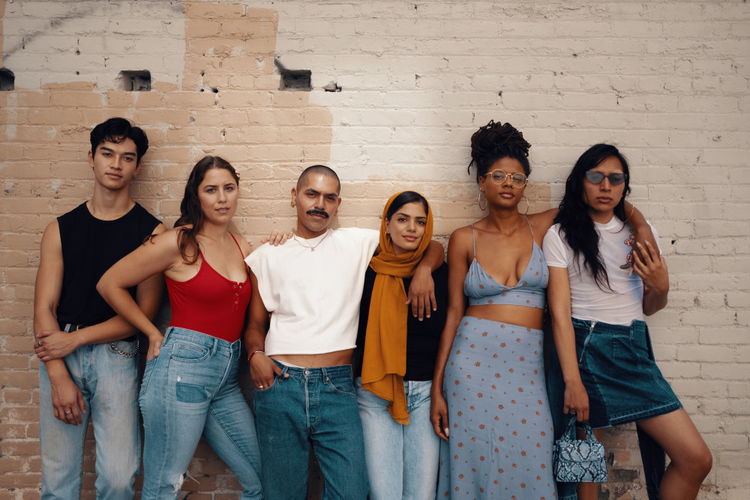
Image source: Adobe Stock / Adam Perez.
At Adobe Stock, we strive to provide that space, in a few different ways, including featuring, supporting, and working with artists from historically underrepresented communities through initiatives like the Artist Development Fund, and prioritizing more inclusive visuals in our collection overall. Let’s face it: to truly represent us all, we need all of us.
Come as you are
The act of simply being oneself is often its own story.
“My entire life, I simply wanted to tell people who I was,” Goldstein recalled, in her interview with Adobe Stock. “And then once I transitioned, I thought, ‘well, why would I ever stop telling people who I am?’”
Without real-world examples, even acknowledging that story becomes far more difficult. “Visual representation is key to unlocking that sense of belonging,” Goldstein explained. “The work I’m doing in the youth space — the reason I do that is because I know that the lack of representation as a young person is what prevented me from coming out much, much earlier. It just didn’t exist — even the word transgender didn’t exist.”
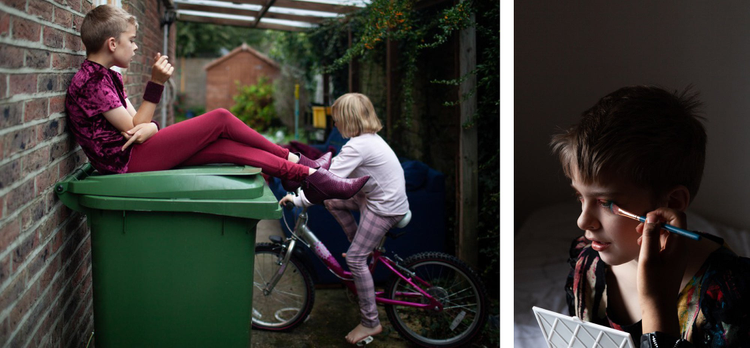
Image source: Adobe Stock / Julia Forsman/Stocksy (left), Adobe Stock / Julia Forsman/Stocksy (right).
There is one particularly important distinction that we need to highlight, here: representation does not mean sensationalism. It means just the opposite, a fact that everyone but especially creatives should keep in mind. Inclusion and celebration are welcome, but to sensationalize, even with the best of intentions, can be othering.
Disability rights activist and comedian Stella Young, who died in 2014, described a main faction of these problematic portrayals as a positive but ultimately skewed view of a person’s lived experience.
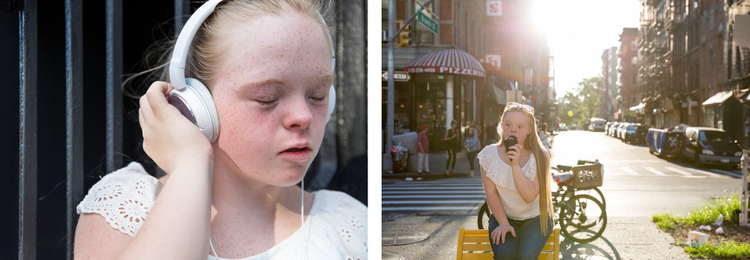
Image source: Adobe Stock / Fjello/Stocksy (left), Adobe Stock / Fjello/Stocksy (right).
“When people say you’re an inspiration, they mean it as a compliment,” Young said in a 2013 TED talk. “We’ve been sold this lie that disability makes you exceptional and it honestly doesn’t. … I want to live in a world where we don’t have such low expectations of disabled people that we are congratulated for getting out of bed and remembering our own names in the morning.”
One way to help fix this is increased accurate visibility. To that end, the Adobe Stock Advocates program has partnered with LaVant Consulting, a firm dedicated to improving and expanding representation of people with disabilities, through their consulting work and strong ties to a network of disability organizations and communities across the U.S.
“I think having more accurate and authentic and normal [content] of people with disabilities doing normal things like housework and chores normalizes disability,” said Sofia Webster, Impact Officer at LaVant. “It paints it just as another form of the human experience instead of a thing to be othered and pathologized.”
Aaron “Wheelz” Fotheringham, an extreme sports athlete and Guinness World Record holder for longest wheelchair ramp jump, made a similar statement in a 2017 interview with USA Today — “I want it to be a normal thing when you go to a skate park and you see someone on a wheelchair shredding the gnar,” he said.
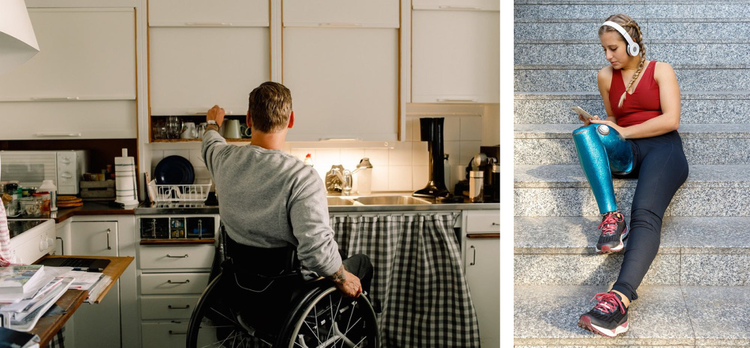
Image source: Adobe Stock / Maskot (left), Adobe Stock / Ignacio Ferr√°ndiz Roig/Westend61 (right).
Every body welcome as brands embrace more inclusive casting
While a lot of what is going on in advertising is business as usual, brands are catching on to the increased demand for, well, realism. In a 2020 casting call on Backpage, Verizon Wireless specifically requested their actual customers — no actors — apply for a spot in an ad campaign. The call, which expired on June 13th of 2020, did not specify the age, race, size, or gender of applicants, choosing instead to focus on their media consumption habits.
The ad read as follows: “Seeking real families who live in Los Angeles or New York. Families who love entertainment and can never agree what to watch… Families who are dedicated Disney, Marvel, or Star Wars fans and can quote films and/or sing the songs.”

Image source: Adobe Stock / Hero Images.
The result: a series of commercials, all shot on a seamless soundstage, that featured a diverse cast of participating families.
Clothing brands are also expanding their horizons when it comes to advertising (and sizing!). American Eagle Outfitters, known for their extensive denim lines, launched their “Make Moves” campaign in 2018, which included a dance video set to Kendrick Lamar’s track “DNA.” Like in Verizon’s ad, the featured dancers were all actual American Eagle customers, and a range of genders, ethnicities, and body types.
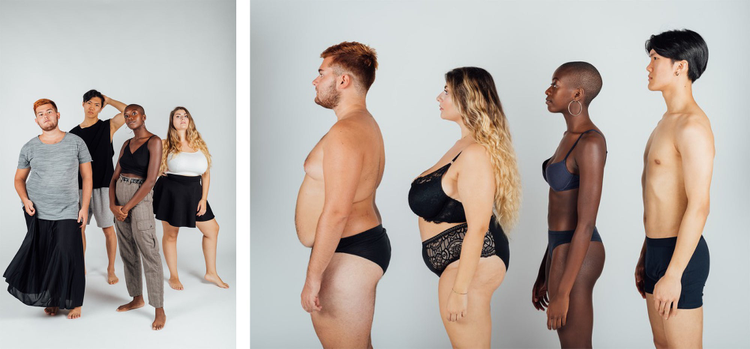
Image source: Adobe Stock / Image Source (left), Adobe Stock / Image Source (right).
There are times, too, when it takes a bona-fide industry insider to shake things up. Lauren Wasser, an established model, was twenty-four years old when she underwent surgery to remove her right leg after complications related to toxic shock syndrome (also known as TSS). Six years later, her left leg was also amputated. Wasser, who wears sleek, golden prosthetic limbs, was able to continue her career — something she did not expect.
“I never would have thought this industry would be so supportive and accept me with open arms,” Wasser told HyperBae in 2019. “If this [TSS] happened to me 10 years ago, I don’t think I would be where I am. It shows that this industry is changing and expanding its idea of beauty to include all shapes, sizes, abilities and colors. We still have a lot of work ahead, but progress is progress.”
And, when that progress comes from a place of genuine interest and commitment, it shows. Sofia Webster cites LinkedIn’s “The Hiring Chain” spot and Hulu’s ad for International Day of People with Disabilities (which includes a version with audio descriptions), among others, as encouraging examples of accurate representation. “You can tell when [a] team is dedicated to getting it right,” Webster said. “It’s really great to see companies, big ones, who show a commitment to diversity and inclusion. That is a big deal.”
Create the stock imagery you want to see
The need is strong and growing for authentic, diverse imagery that reflects a full range of real people in advertising. One of our highest priorities at Adobe is to continually add and promote accurate, empowering visual narratives that express the world today to our ever-growing collection.
We launched the Adobe Stock Advocates program to help inspire and support the creation of impactful, honest, inclusive content that meets today’s needs. As part of the program, we have released eight intersectional creative briefs to help inspire new and diverse visuals. To further scale our commitment to inclusion in stock, we have launched a $500,000 creative commission program called the Artist Development Fund, focused specifically on supporting artists who identify with — and depict —underrepresented communities in their visuals. Artist applications are open.
For more inspiration — and to learn about Adobe Stock’s ongoing Advocates program — take a look at our Celebration of Self creative brief. Then, submit your best content celebrating unique bodies and personalities to Adobe Stock.